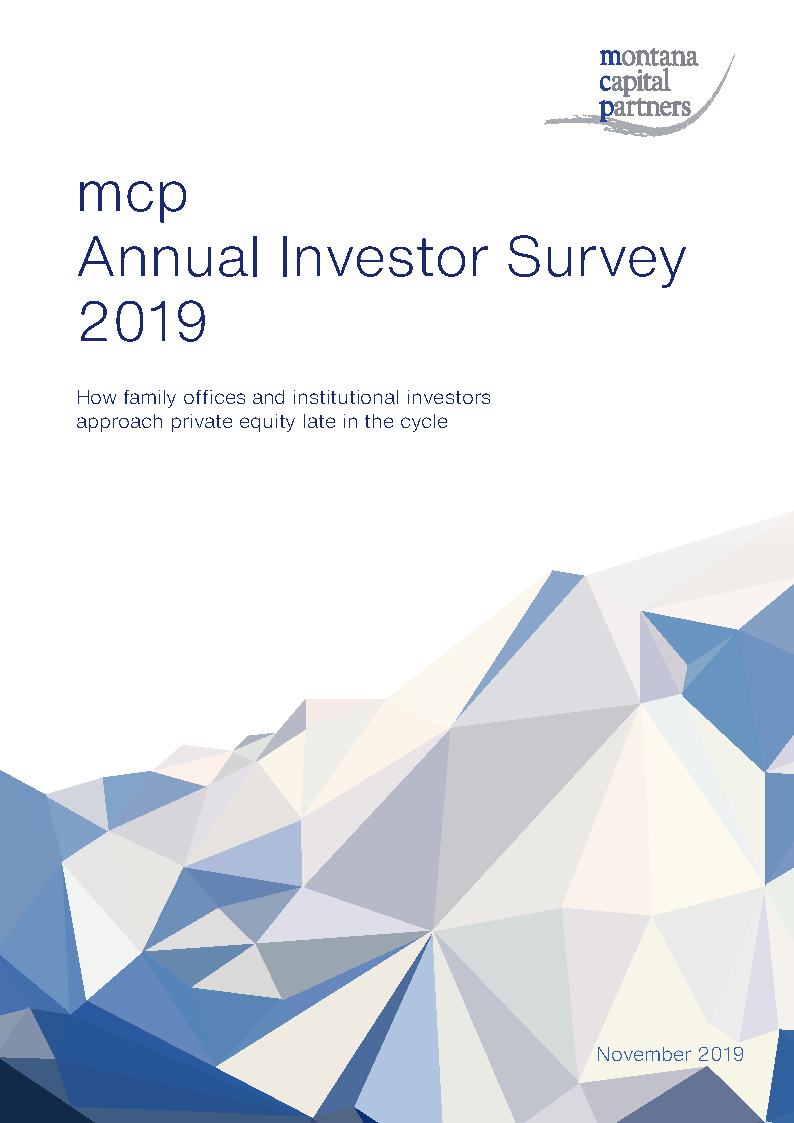Reliable
Independent
Innovative

mcp’s seventh research report on how investors approach private equity
Press release:
How family offices and institutional investors approach private equity late in the cycle
- Investor allocations to private equity have further increased, with a significant jump in the portion of institutional investors allocating more than 5% of their capital to the asset class from 40% to 60%, and with over one third of family offices allocating more than 20%
- Secondaries funds have surpassed distressed and turnaround funds as the preferred strategy for investors to protect themselves and benefit from a potential market downturn
- GP-led secondaries have become mainstream and generally accepted as a standard liquidity solution for private equity investors
- Need for liquidity has doubled among investors as a motivation to sell – a trend driven particularly by family offices which are seeking to lock in strong unrealized returns
Zug, November 2019
Montana Capital Partners (mcp) has published its seventh mcp Annual Investor Survey, which provides unique insights into the investment preferences and expectations of leading institutional investors and family offices worldwide. The full report is available for download here.
The survey highlights private equity’s continuous appeal to investors: three quarters of family offices and foundations allocate more than 10% of their capital to the asset class, and a third more than 20%. Among institutional investors, there has been a fundamental shift in 2019 towards higher allocations: 60% of respondents this year invest more than 5% of their capital in private equity, compared to 40% last year.
An economic slowdown is a growing concern for investors. 75% of respondents expect a major correction to affect private equity and 85% to affect stock markets over the next 24 months. In the case of a turmoil, the secondaries market would benefit: 70% of investors expect that this would lead to a surge in secondaries market volume.
To protect themselves and to benefit from a change in the market cycle, the preferred strategy for both institutional investors and family offices and foundations is to invest in secondaries funds, which for the first time rank higher than traditional defensive strategies like distressed and turnaround funds.
Eduard Lemle, Partner at mcp, commented: “Secondaries funds are viewed very favorably in the current environment late in the cycle. In a downturn, discounts increase again as selling LPs face greater liquidity pressure, and at the same time the historically low loss ratios of secondaries funds provide a high level of comfort to their investors.”
Three quarters of all investors selected GP-led continuation funds as one of the most meaningful innovations that the secondaries market has contributed to private equity. 38% also indicated that they would prioritize GP-leds as an investment strategy over the next 12 months – along with small secondaries and complex secondaries – over less favorably viewed strategies like tail-end portfolios and large fund portfolio acquisitions.
Marco Wulff, Managing Partner at mcp, added: “Our survey highlights the evolution that has taken place in the GP-led segment of the secondaries market. Away from a negative image of restructuring “zombie funds”, GP-leds have become an accepted instrument to provide liquidity. mcp has been active in this market and led various transactions with high-quality mid-market buyout managers in Europe and the U.S.”
Methodology
A large number of the industry’s leading family offices and institutional investors worldwide were surveyed online during the months of August and September 2019. A smaller group of investors was then interviewed by phone to provide further insights into the results.



